Are you an acoustic guitar enthusiast looking to improve your technique and take your playing to the next level? It can be tough to know where or how to start, but don’t worry: with practice, dedication and these tried-and-true techniques for learning and improving on the acoustic guitar, you’ll soon find yourself soaring through more difficult pieces of music like a professional. With information covering warm ups, fingerpicking exercises and proper fretting technique as well as other helpful tips picked up from years of experience in the field by some truly talented musicians, this blog post will provide you with all of the knowledge necessary for optimal practicing on your acoustic guitar. Get ready to rock!
Techniques For Practicing Acoustic Guitar
Hammer-ons and Pull-Offs
Hammer-ons and pull-offs are essential techniques for developing speed and dexterity on the guitar. Hammer-ons are a quick and efficient technique for fretting one string while strumming another in succession with your fretting hand. Pull-offs are the opposite, where you lift off one finger while strumming a different string. This can be done very quickly in succession to create complex rhythms and melodies.
Alternate Picking
Alternate picking is an important technique that helps build consistency in your playing. It involves picking up and down each time you strum the strings. For example, if you’re playing a chord progression, you would pick up on the first string and then down on the second string, up on the third string and down on the fourth string, and so on. This technique helps ensure that each note is picked cleanly and consistently. [1]

String Bending
String bending is a technique used to add expression to your playing. It involves pushing or pulling the strings with your fretting hand while strumming them with your picking hand to create bends in the sound of the notes. This can be done slowly for a gradual bend or quickly for more dramatic effects. It’s an important technique for creating dynamic and interesting sounds in acoustic guitar playing.
Fingerpicking Patterns
Fingerpicking patterns are essential techniques for developing accuracy, speed, and dexterity on the guitar. Fingerstyle patterns involve picking individual strings rather than strumming all at once. As you get more comfortable with fingerstyle techniques, you can begin to add complex rhythms and melodies by picking multiple strings at the same time. This technique is essential for creating expressive and dynamic guitar playing.
Vibrato
Vibrato is a technique used to add expression and emotion to a note or phrase. It involves quickly bending the string back and forth while strumming it in order to create a vibrating sound. Depending on how fast or slow you do this, you can create subtle nuances in your playing that give each note its own unique character. [2]
Palm Muting
Palm muting is an important technique for controlling the volume of notes and chords when playing acoustic guitar. It involves dampening the strings with your picking hand’s palm while strumming to create a muted sound. This technique is essential for creating dynamics in your playing and can be used to emphasize certain notes or phrases.
Sliding and Slurring
Sliding and slurring are techniques used to add expression to your playing. Sliding involves quickly moving one finger up or down the fretboard while strumming a chord or note. This creates a smooth transition between notes which can be used to create interesting melodic lines. Slurring is similar, but instead of sliding between frets, you use your fingers to slide between strings in quick succession. Both techniques help bring life and energy to acoustic guitar playing.
Natural Harmonics
Natural harmonics are a technique used to add a bell-like sound to your playing. It involves lightly touching the strings at certain points along the fretboard while strumming in order to create harmonic overtones. This can be used for creating unique sounds and textures that really stand out from traditional acoustic guitar playing.
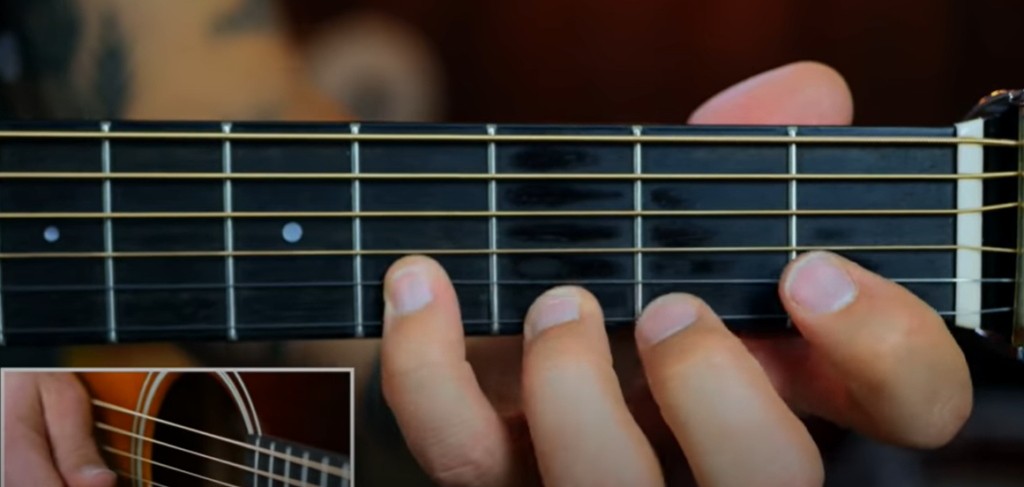
Open Tunings
Open tunings are an essential tool for developing your acoustic guitar playing. By tuning the strings of the guitar differently, you’re able to explore different chord voicings and melodies. Open tunings also make it easier to play complex chords quickly without having to stretch your hands too much. Experimenting with open tunings is a great way to widen your sonic palette and take your acoustic guitar playing to the next level.
Playing with a Metronome
Using a metronome is one of the best ways to develop accuracy and speed on the guitar. It’s also an important tool for learning how to keep time with other instruments or when playing with a band. Practicing with a metronome can help you stay in time and learn how to phrase your solos and melodies dynamically. [3]
Developing Listening Skills
Of course, developing your listening skills is essential for becoming a better acoustic guitar player. This involves not only listening to yourself play but also studying recordings of great players from different genres. By taking the time to listen closely and analyze what they’re doing, you can learn techniques and ideas that you can incorporate in your own playing. This approach will help open up your playing and help you find your own unique voice.
Music Theory
Finally, acquiring a basic understanding of music theory is essential for taking your acoustic guitar playing to the next level. Even if you don’t want to become an expert in music theory, having a working knowledge can help you quickly learn songs and compose melodies more easily. It will also give you a better understanding of what notes work well together and how to create interesting chords and progressions.
By mastering each of these techniques, you can take your acoustic guitar playing to the next level. With practice and dedication, you can develop your skills so that you can express yourself musically in any situation. Whether it’s fingerstyle blues or open-tuned folk songs, with time and effort, you can become an accomplished acoustic guitarist.
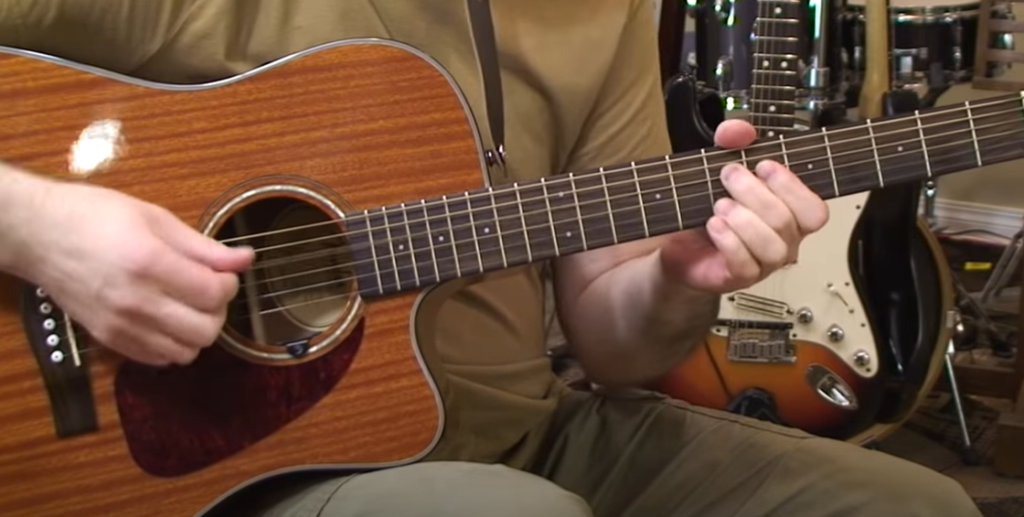
Things You Need To Do When Practicing Your Guitar
Slowing It Down
When learning a new song or technique, it’s important to take your time and practice slowly. Trying to learn something too quickly will only lead to frustration and errors. Start by playing the piece at half speed then gradually increase the speed as you become more comfortable with it.
Breaking It Down
Breaking down a song into sections can make it easier when trying to memorize difficult parts. Instead of tackling the whole song all at once, break it up into small chunks of 2-4 bars each and focus on mastering one segment at a time before moving onto the next one.
Focusing On Technique
Having correct technique is essential for producing good sound while playing guitar. Spend some time practicing basic skills such as strumming, picking, and fingerpicking. Also pay attention to how you hold the guitar and how your fingers move on the strings when playing chords or scales. [4]
Record Yourself
Recording yourself while playing guitar can be a great way to identify any mistakes or areas that need improvement. Listen back and make note of any sections that sound off or don’t match up with the rest of the song. This is also a good way to track your progress as you work on improving your playing.
Challenge Yourself
It’s easy to get stuck in a rut when practicing guitar and only play the same songs over and over again. Try challenging yourself by learning more complicated pieces or picking up a new style such as jazz, blues, or classical. This will help keep your skills sharp and give you something fresh to work on.
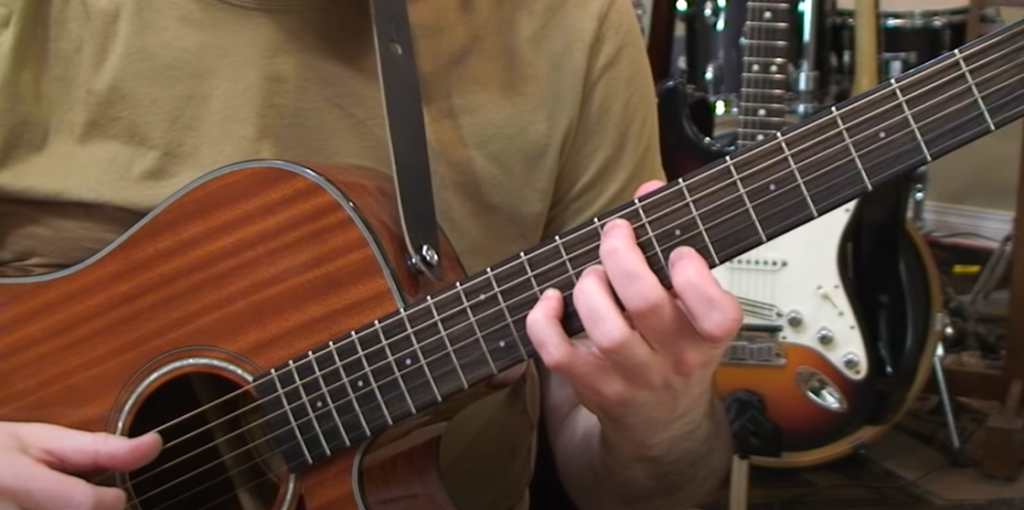
Maximum Focus And A Schedule
To get the most out of your practice sessions, make sure to set aside a specific time each day where you can focus on playing without any distractions. Set a goal for what you want to accomplish during that time and stick with it. This will help you stay motivated and make progress more quickly.
Compare the Notations
Guitar tablature is a great way to learn how to play songs quickly, but it’s important to make sure you are playing the correct notes. Take some time to compare the tablature with other notations such as standard notation or chord diagrams so that you understand what you are playing and why.
Have Fun!
Above all, remember that learning guitar should be enjoyable. Don’t get discouraged if things don’t come easily at first – practice makes perfect! Have fun experimenting with different styles and techniques and most importantly, just enjoy making music. [5]
Benefits of Acoustic Guitar Practice
Practicing acoustic guitar can have many benefits, both for your playing and mental health. Regular practice can help to develop muscle memory and refine techniques so you can play more easily. Additionally, it can provide a much needed outlet for stress relief and creative expression. Practicing acoustic guitar can also open up opportunities to perform in public or collaborate with other musicians. Overall, it is an activity that provides numerous physical and emotional rewards.
Acoustic guitar practice allows you to hone your skills by gradually building upon what you already know. You don’t need to be an expert to start; all levels of players can benefit from consistent practice sessions. With dedication and effort, you will learn new chords, songs, scales and techniques over time. As you become more comfortable playing, your confidence will grow and you’ll be able to venture into more challenging pieces.
Finally, practicing acoustic guitar can give you an opportunity to share your passion with others or even make a career out of it. If you invest time and energy in learning different styles and techniques, people may come to recognize you as an expert guitarist – which could open up numerous opportunities.
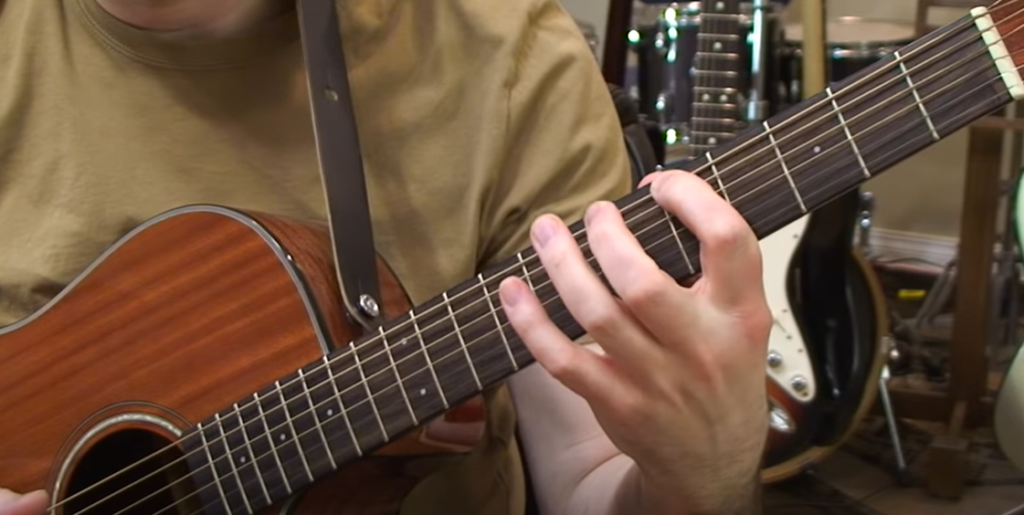
Disadvantages of Acoustic Guitar Practice
Acoustic guitar practice can be a difficult and time-consuming process. It requires dedication, discipline, and focus – all of which can be difficult to maintain over an extended period of time. Additionally, the sound of an acoustic instrument at home may not sound as good as it does in a professional studio or concert hall setting.
Furthermore, playing acoustically may require investing in additional equipment such as amplifiers and pickups which can prove expensive. Lastly, practicing acoustic guitar can become repetitive since very few players create entirely new material each time they pick up their instrument; this boredom could lead to decreased motivation for continued practice.
Although there are some drawbacks to acoustic guitar practice, the benefits far outweigh them. With the correct technique, focusing on proper practice habits, and dedication to their craft, any guitarist can become an expert on the acoustic guitar.
All in all, practicing acoustic guitar can be a rewarding experience that yields amazing results with patience and hard work. With this guide, you should now have the information necessary to start developing your skills as an acoustic player. [6]
Harmony Unplugged: Advanced Techniques for Mastering Acoustic Guitar
Transform your acoustic guitar playing with these intricate practice techniques. Dive into this comprehensive comparison table, exploring technique focus, skill level, recommended genres, fingerstyle complexity, and additional insights. Elevate your acoustic guitar skills and bring a new dimension to your unplugged performances.
| Technique | Technique Focus | Skill Level | Recommended Genres | Fingerstyle Complexity | Additional Insights |
|---|---|---|---|---|---|
| Fingerpicking Patterns | Fingerstyle Precision | Intermediate | Folk, Acoustic Pop | Varied Finger Movements | Focus on Dynamics and Tone Control |
| Travis Picking | Alternating Bass and Melody | Intermediate-Advanced | Country, Folk | Complex Finger Coordination | Gradual Increase in Speed |
| Harmonics | Natural and Artificial Harmonics | Advanced | Fingerstyle Jazz, Fusion | Precision in Touch and Plucking | Experiment with Harmonic Placement |
| Chord Melody | Integrating Melodies into Chords | Intermediate-Advanced | Jazz, Blues | Fretboard Navigation | Explore Creative Voicings |
| Slap Strumming | Rhythmic Percussive Strumming | Intermediate | Indie, Alternative | Striking and Muting Techniques | Emphasize Rhythm and Groove |
Explanation:
- Fingerpicking Patterns: Intermediate technique focusing on fingerstyle precision, suitable for folk and acoustic pop. Varied finger movements create dynamic patterns; focus on dynamics and tone control.
- Travis Picking: Intermediate-advanced technique involving alternating bass and melody, ideal for country and folk. Requires complex finger coordination; gradually increase speed for a smooth performance.
- Harmonics: Advanced technique encompassing natural and artificial harmonics, recommended for fingerstyle jazz and fusion. Precision in touch and plucking; experiment with harmonic placement for unique sounds.
- Chord Melody: Intermediate-advanced technique integrating melodies into chords, suitable for jazz and blues. Involves fretboard navigation; explore creative voicings to enhance musicality.
- Slap Strumming: Intermediate technique focused on rhythmic percussive strumming, fitting for indie and alternative genres. Involves striking and muting techniques; emphasize rhythm and groove for a lively performance.
Choose an acoustic guitar technique from this table to add depth and complexity to your playing, creating harmonious melodies with your unplugged instrument.
FAQ
How do you practice acoustic guitar?
The goal when practicing acoustic guitar is to be mindful of your technique and strive for accuracy, consistency, and speed. You can practice with a metronome or drum machine to help you stay in time. Additionally, try learning scales and chord progressions so that you can start improvising on different chords. Breaks between practice sessions are essential for giving your hands and mind a rest before continuing.
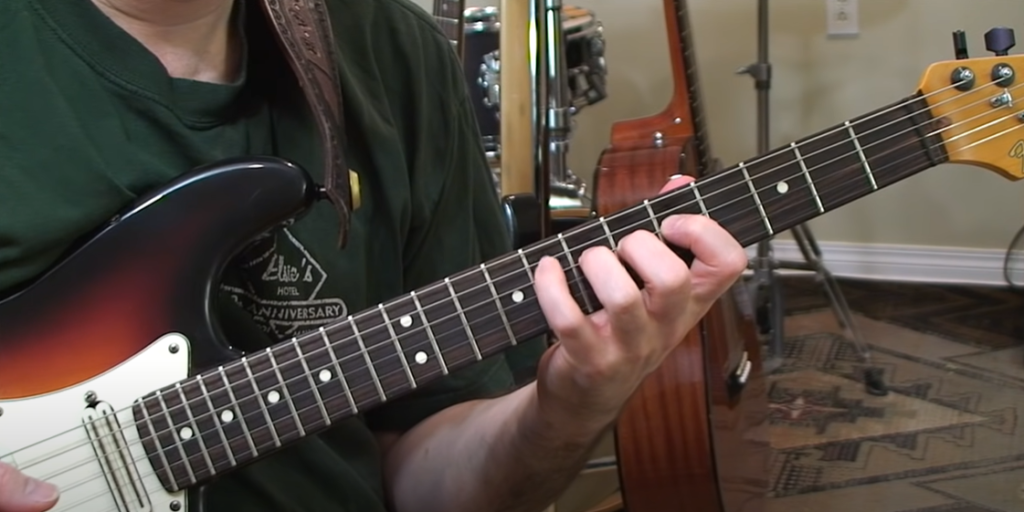
What are some basic techniques for acoustic guitar?
Some basic techniques include strumming, fingerpicking, muting strings, dampening strings, and picking individual notes. Strumming involves moving upward or downward across the strings while plucking them all at once with a pick or thumb. Fingerpicking involves playing individual notes by plucking with your fingers instead of a pick. Muting strings means lightly pressing down on the strings to prevent them from ringing out while dampening strings requires pressing down harder on the strings to make them stop sounding altogether. Additionally, you can pick individual notes by plucking each string one at a time with your pick or fingers.
How long should I practice acoustic guitar?
It’s best to practice for shorter amounts of time and more frequently rather than longer periods of time less often. Aim for 30 minutes per day, 4-5 days per week for an effective practice session. Make sure to take breaks in between sessions so that your hands and brain have time to rest before continuing. Remember that consistency is key when it comes to learning new skills, so be sure to practice regularly in order to make progress.
Are there any tips for practicing acoustic guitar?
Yes! Here are a few tips:
- Start slow and focus on accuracy over speed. Speed will come with time and practice.
- Use a metronome or drum machine to help keep you in time while strumming or fingerpicking chords.
- Learn scales and chord progressions, as these can form the basis of improvising on different chords.
- Take breaks between practice sessions to give your hands and brain a rest before continuing.
- Be consistent with your practice schedule so that you can track your progress over time.
- Have fun! Playing music should be enjoyable, and taking breaks to listen to your favorite songs can help you stay motivated.
How many hours does it take to learn acoustic guitar?
The amount of time it takes to learn acoustic guitar depends on a variety of factors, including your level of dedication to practicing, the complexity of the songs you want to learn, and any prior knowledge or experience playing other instruments. In general, beginners can expect to spend many hours learning basic techniques such as strumming and fingerpicking before they are able to play recognizable melodies. It is important to be consistent with practice in order for progress to be made, so having a regular practice schedule is essential. Additionally, using helpful tools such as metronomes or drum machines can help with accuracy and staying in time.
What should I focus on when practicing acoustic guitar?
When practicing acoustic guitar, it’s important to focus on accuracy, consistency, and speed. Take the time to learn proper technique such as strumming or fingerpicking chords, picking individual notes, muting strings, and dampening strings. Additionally, learning scales and chord progressions can help you with improvising on different chords. Finally, take regular breaks between practice sessions so that your hands and brain have time to rest before continuing.
Can you self teach guitar?
Yes, it is possible to self-teach guitar. However, it is important to be consistent with practice and use helpful tools such as metronomes or drum machines for accuracy and staying in time. Additionally, learning scales and chord progressions can form the basis of improvising on different chords. Finally, taking breaks between practice sessions is essential for giving your hands and mind a rest before continuing.
Is 1 year enough to learn guitar?
This is a difficult question to answer, as it depends on each individual’s learning style and dedication. Generally speaking, it is possible to learn the basics of acoustic guitar within one year with regular practice. However, depending on your personal goals and rate of progress, more time may be required before you can reach a level of proficiency that will allow you to perform comfortably. It is important to set realistic expectations for yourself when learning an instrument like the acoustic guitar. Having a plan in place with specific goals helps keep you motivated and allows you to measure your progress over time. Setting aside at least 30 minutes of practice per day can help ensure that you stay focused and make steady progress towards your playing goals. Incorporating various techniques into your practice routine can also help you learn quickly and effectively.
What is the best age to learn acoustic guitar?
There is no definitive answer as to what age is best for learning the acoustic guitar. Some people find that picking up an instrument at a young age allows them to form a strong foundation and progress more quickly, while others may prefer starting later in life when they have more time and patience for practice. Ultimately, the best age to learn will depend on each individual’s preferences and determination. That being said, it is never too late or too early to start learning! No matter your age, you can acquire basic proficiency with regular practice and dedication. Incorporating different techniques into your routine can also help make the process smoother and more enjoyable.
Is there a way to practice guitar without making noise?
Yes, there are many ways to practice acoustic guitar without making noise. One of the simplest techniques is to use a mute or dampening material on the strings while you play. This will reduce some of the sound and allow you to practice in quieter settings. Alternatively, you can also use headphones with an amplifier or audio interface to plug your guitar into. This is ideal for practicing at home without disturbing others around you. Additionally, many online lessons incorporate video instruction that allows you to hear the instructor’s playing without having to make any noise yourself. Incorporating these techniques into your practice routine can help ensure that you can stay focused and progress quickly even when it isn’t possible or desirable to make noise. No matter what level of experience you’re at, these methods can help you take your playing to the next level.
Is guitar easier than piano?
The answer to this question is largely subjective. While some may find guitar easier than piano, others may find it more difficult. It all depends on the individual’s skill level and preferences. As with any instrument, there are certain aspects of each that make them unique and challenging in different ways.When comparing acoustic guitar to piano, one difference is that the strings of a guitar are fretted which makes for an easier playing experience as you don’t have to press down individual notes like with a piano key. Additionally, chords on a guitar can be more easily mastered because they often require less finger coordination than those of a piano. On the other hand, learning the fundamentals of the guitar takes practice and patience. Developing proficiency on guitar can be more time-consuming than with piano as the former requires memorizing chords and notes, while the latter uses a keyboard layout to make it easier to remember. Therefore, your decision of which instrument is “easier” to learn should depend on personal preference and dedication.
Can you recommend specific fingerstyle exercises for practicing acoustic guitar?
Certainly! To enhance your fingerstyle technique, try exercises like “Classical Gas” by Mason Williams or “Dust in the Wind” by Kansas. These pieces focus on fingerpicking patterns, helping you improve precision and coordination in your acoustic guitar playing.
What are some effective drills for improving acoustic guitar chord transitions?
For chord transition practice, consider drills like the “1-Minute Change” exercise, where you switch between two challenging chords for one minute. Songs like “Horse with No Name” by America and “Knocking on Heaven’s Door” by Bob Dylan are also great for honing smooth chord transitions.
Can you suggest exercises to enhance acoustic guitar strumming techniques?
Absolutely! Work on strumming precision with patterns like “Down-Up-Up-Down-Up” and “Island Strum.” Applying these to songs like “Wish You Were Here” by Pink Floyd or “Blowin’ in the Wind” by Bob Dylan can help you refine your strumming technique on the acoustic guitar.
How can I improve my acoustic guitar fingerpicking speed and dexterity?
To boost fingerpicking speed and dexterity, try exercises like the “Spider Walk” and gradually increase your tempo. Songs like “Blackbird” by The Beatles and “Dust My Broom” by Elmore James offer opportunities to develop faster fingerpicking skills on the acoustic guitar.
What are effective methods for mastering barre chords on acoustic guitar?
For mastering barre chords, start with simpler shapes and gradually progress to more complex ones. Practice songs like “House of the Rising Sun” by The Animals and “Every Breath You Take” by The Police, which incorporate barre chords and help reinforce your proficiency in playing them on acoustic guitar.
Useful Video: The BEST Guitar Exercise!
Conclusion
Practicing acoustic guitar is an important part of becoming a better player. Taking the time to develop proper technique, as well as scheduling regular practice sessions, can help you make progress in your playing. By breaking down challenging pieces into smaller sections and using various techniques such as muting strings, fingerpicking patterns, and strumming patterns, you can take your playing to the next level. Finally, don’t forget to have fun in the process! With some dedication and effort, practicing acoustic guitar can be both enjoyable and rewarding.
Good luck!
References:
- https://play-guitars.com/practicing-acoustic-guitar/
- https://acousticguitarlessonsonline.net/howtopracticeacousticguitar
- https://online.berklee.edu/takenote/acoustic-guitar-techniques-to-move-past-beginner-level/
- https://www.guitarworld.com/lessons/five-easy-tips-to-improve-your-acoustic-guitar-playing
- https://deviantnoise.com/guitar/techniques/
- https://prosoundhq.com/how-to-practice-the-guitar-quietly-acoustic-and-electric/










Leave a Reply